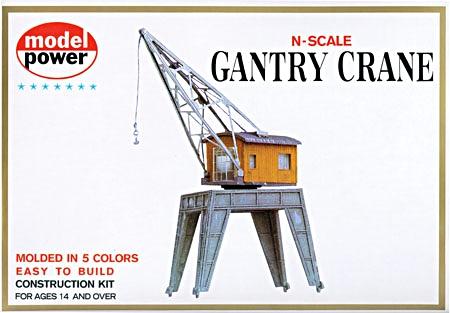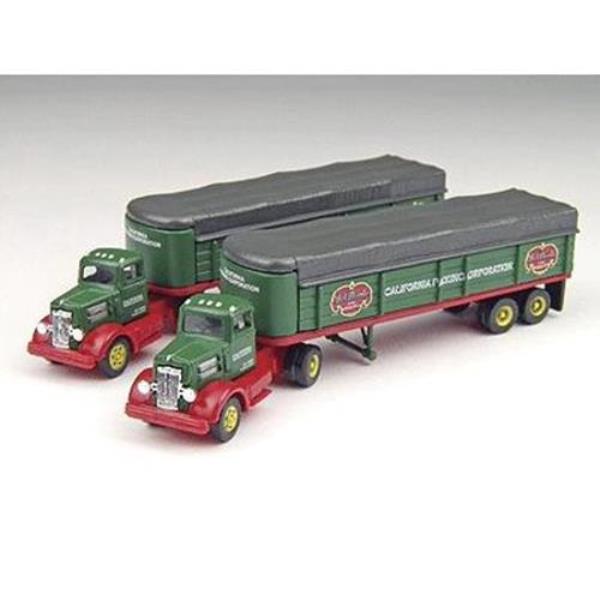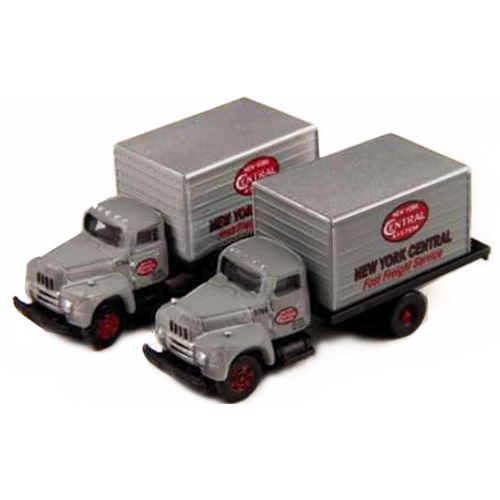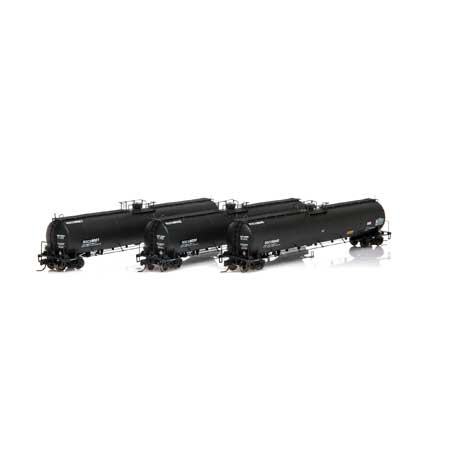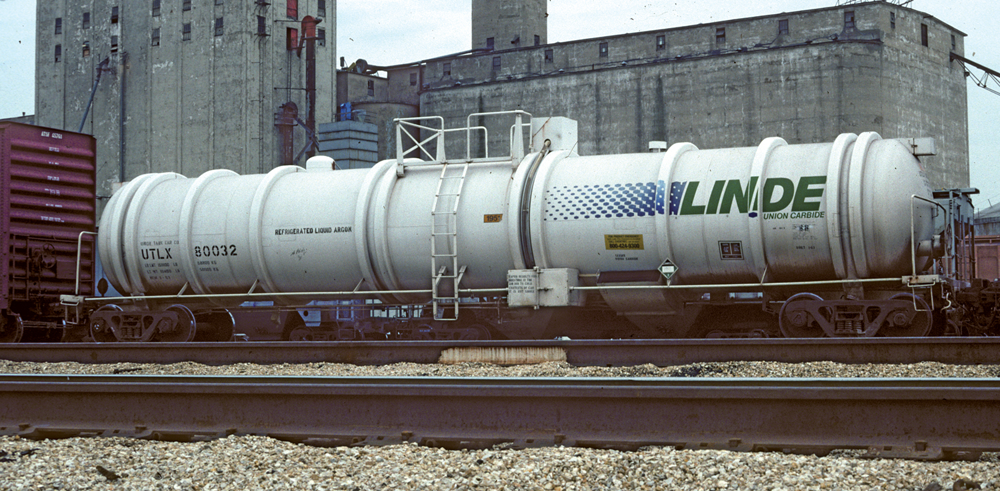Model Information: Broadway Limited announced this model in November of 2018.
Features:
Features:
- Precision Paint, Color, and Lettering Schemes
- Many Separately Applied Details including Hand Rails, ladders, brake wheel, roof walkway
- Beautifully Detailed and Accurately Modeled
- Precision Paint, Color, and Lettering Schemes
- Composition: ABS
- Couplers: (2) Operating MicroTrains Compatible
- Compatible Tracks: Code 55, 70 and 80 Rail
- Minimum Operating Radius: 9.75 in
Prototype History: High Capacity Railroad Tank Cars for Cryogenic Fluids, or Cryogenic Tank Cars for short, are used for the transportation of super-cold fluids such as liquid oxygen, nitrogen and argon. These tank cars solved the problem of maintaining extremely low temperatures while transporting large quantities of these materials over long distances.
These high capacity tank cars could transport more than 15,000 gallons of liquid oxygen--which is about double what any of its predecessors could do.
Cryogenic Tank Car Designations: DOT 113; AAR 204 and 204XT.
Cryogenic railroad tank cars are usually constructed of nickel or stainless steel as a tank within a tank. Because cryogenic liquids are very cold, insulation is placed between the two tanks and a vacuum pulled on the space to maintain the temperature. This process will allow the tank car a 30-day holding time.
Cryogenic cars transport various gases, including flammable hydrogen, liquid oxygen and poisons. Some cryogenic gases, such as nitrogen and argon, are considered inert. Temperatures of these liquefied gases can range from the warmest, carbon dioxide at –130°F, liquid oxygen at -297°F, liquid argon at -302°F, liquid nitrogen at -320°F, to the coldest, helium at –452°F. Thermal hazards of these materials are significant.
In addition to thermal hazards, cryogenic liquids have a large liquid-to-vapor expansion ratio. A small leak from a valve or container can create a large vapor cloud. Some ratios are as great as 900 to 1, meaning one gallon of cryogenic liquid can produce over 900 gallons of gas.
From Broadway Limited International and Firehouse
These high capacity tank cars could transport more than 15,000 gallons of liquid oxygen--which is about double what any of its predecessors could do.
Cryogenic Tank Car Designations: DOT 113; AAR 204 and 204XT.
Cryogenic railroad tank cars are usually constructed of nickel or stainless steel as a tank within a tank. Because cryogenic liquids are very cold, insulation is placed between the two tanks and a vacuum pulled on the space to maintain the temperature. This process will allow the tank car a 30-day holding time.
Cryogenic cars transport various gases, including flammable hydrogen, liquid oxygen and poisons. Some cryogenic gases, such as nitrogen and argon, are considered inert. Temperatures of these liquefied gases can range from the warmest, carbon dioxide at –130°F, liquid oxygen at -297°F, liquid argon at -302°F, liquid nitrogen at -320°F, to the coldest, helium at –452°F. Thermal hazards of these materials are significant.
In addition to thermal hazards, cryogenic liquids have a large liquid-to-vapor expansion ratio. A small leak from a valve or container can create a large vapor cloud. Some ratios are as great as 900 to 1, meaning one gallon of cryogenic liquid can produce over 900 gallons of gas.
From Broadway Limited International and Firehouse
Road Name History: 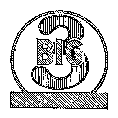 Big Three Industries (then known as Big Three Welding Equipment) began selling welding gases and supplies in Lake Charles, Louisiana in 1958. In 1965, oxygen and nitrogen pipelines were laid to connect the Beaumont and Lake Charles industrial communities together. This solidified Big Three's ambitions of building a pipeline network for industrial gas transportation along the Gulf Coast from Southwest Louisiana to South Texas.
Big Three Industries (then known as Big Three Welding Equipment) began selling welding gases and supplies in Lake Charles, Louisiana in 1958. In 1965, oxygen and nitrogen pipelines were laid to connect the Beaumont and Lake Charles industrial communities together. This solidified Big Three's ambitions of building a pipeline network for industrial gas transportation along the Gulf Coast from Southwest Louisiana to South Texas.
In 1986, an agreement was reached for Air Liquide to acquire Big Three, which assumed responsibility for operating the Westlake air separation unit in 1989, and incorporated it into the pipeline system in 1991. In 1994, Big Three and Liquid Air Corporation were merged to create the company's current name, Air Liquide America Corporation.

In 1986, an agreement was reached for Air Liquide to acquire Big Three, which assumed responsibility for operating the Westlake air separation unit in 1989, and incorporated it into the pipeline system in 1991. In 1994, Big Three and Liquid Air Corporation were merged to create the company's current name, Air Liquide America Corporation.
Brand/Importer Information:  Broadway Limited Imports, LLC defines itself as "the world's foremost producer of top-quality HO and N scale model trains".
Broadway Limited Imports, LLC defines itself as "the world's foremost producer of top-quality HO and N scale model trains".
The company was founded in 2002 and introduced its first N scale model in 2009.
Broadway Limited Imports is composed of a team of 15 fun loving individuals who are dedicated to creating the most realistic model railroading experience possible, with the best customer service possible.
The Broadway Limited Imports headquarters is located in Ormond Beach, Florida at 9 East Tower Circle. It's just under an hour's drive from Disney World.
About Broadway Limited Imports.

The company was founded in 2002 and introduced its first N scale model in 2009.
Broadway Limited Imports is composed of a team of 15 fun loving individuals who are dedicated to creating the most realistic model railroading experience possible, with the best customer service possible.
The Broadway Limited Imports headquarters is located in Ormond Beach, Florida at 9 East Tower Circle. It's just under an hour's drive from Disney World.
About Broadway Limited Imports.
Item created by: CNW400 on 2023-05-15 09:48:07. Last edited by CNW400 on 2023-11-30 09:46:58
If you see errors or missing data in this entry, please feel free to log in and edit it. Anyone with a Gmail account can log in instantly.
If you see errors or missing data in this entry, please feel free to log in and edit it. Anyone with a Gmail account can log in instantly.




